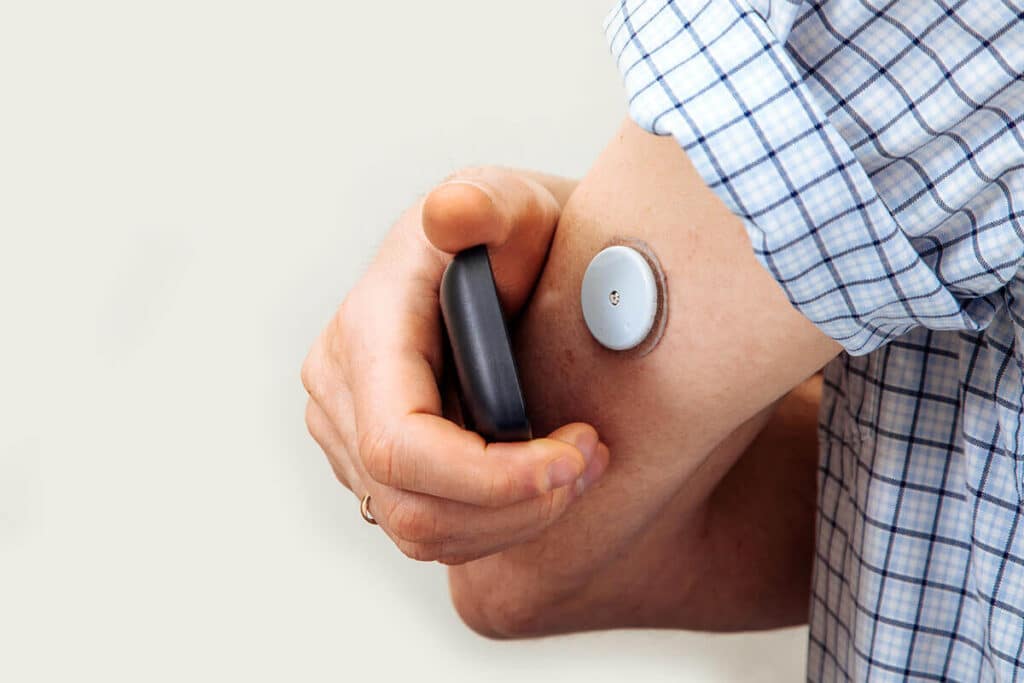Diabetes management has come a long way from the days of manual blood glucose testing and cumbersome monitoring methods. One of the most significant advancements in this field is the development of continuous glucose monitoring (CGM) systems. These devices are not only enhancing the way diabetes is managed but also have the potential to profoundly change the lives of patients. This blog will delve into how CGMs are revolutionizing diabetes care, the transformative benefits they offer, and how they could reshape the future of diabetes management.
Understanding Continuous Glucose Monitoring
Continuous glucose monitoring involves the use of a small sensor, typically inserted under the skin, to measure glucose levels in real time. Unlike traditional glucose meters that require multiple fingerstick tests throughout the day, CGMs provide a continuous stream of data on glucose fluctuations. This technology offers patients and healthcare providers a more comprehensive view of glucose trends, enabling better-informed decisions regarding diabetes management.
How CGMs Can Change Patient Lives
Real-Time Data for Better Control
One of the most significant advantages of CGMs is the ability to provide real-time glucose data. This constant stream of information allows patients to see how their glucose levels change throughout the day, providing insights that are not available with traditional testing methods. Real-time data enables timely adjustments to insulin dosages, dietary choices, and physical activity. This level of control can significantly reduce the risk of both hyperglycemia (high blood sugar) and hypoglycemia (low blood sugar), leading to more stable and manageable glucose levels.
Early Detection of Glucose Abnormalities
Alert systems on continuous glucose monitoring let consumers know when their blood sugar levels fluctuate noticeably. For instance, if glucose levels fall below or rise above preset thresholds, the system will trigger an alarm. This early detection capability is crucial for preventing severe glucose-related complications. By alerting patients to potential issues before they become severe, CGMs help in avoiding emergency situations and ensuring timely intervention.
Reduced Need for Fingerstick Testing
Traditional glucose monitoring requires frequent fingerstick tests, which can be painful and inconvenient. CGMs reduce or even eliminate the need for these frequent tests by providing a continuous stream of data through a sensor placed under the skin. This reduction in fingersticks improves the overall comfort and convenience of diabetes management, making it easier for patients to adhere to their monitoring routine.
MoreRead About: Revolutionizing Diabetes Care with Continuous Glucose Monitoring
Improved Quality of Life
The convenience and real-time feedback provided by continuous glucose monitoring contribute to a better quality of life for diabetes patients. With fewer disruptions from frequent fingersticks and a more accurate understanding of glucose trends, patients can focus on their daily activities with greater ease and confidence. The ability to manage diabetes with less hassle and more precision leads to enhanced overall well-being and a more positive outlook on managing the condition.
Personalized Diabetes Management
The data collected by CGMs enables a more personalized approach to diabetes management. Healthcare providers can analyze glucose trends to tailor treatment plans specifically to each patient’s needs. By understanding how different factors, such as diet, exercise, and medication, affect glucose levels, providers can make more informed recommendations. This personalized approach leads to more effective management strategies and better long-term outcomes.
Challenges and Considerations
While CGMs offer many benefits, there are challenges and considerations to be aware of:
Cost and Accessibility
One of the primary challenges with CGMs is their cost. The initial expense of the device, along with ongoing costs for sensors and supplies, can be significant. Insurance coverage for continuous glucose monitoring varies, and not all patients may have access to this technology. Efforts to make CGMs more affordable and accessible are crucial for ensuring that more patients can benefit from this advanced technology.
Accuracy and Calibration
Although CGMs are generally accurate, there may be occasional discrepancies between sensor readings and traditional blood glucose measurements. Regular calibration and proper use are essential to ensure the accuracy of the data provided by CGMs. Patients should work closely with their healthcare providers to address any issues related to accuracy and calibration.
Data Management
CGMs generate a large amount of data, which can be overwhelming for some users. Effective data management is necessary to make the most of the information provided by CGMs. Patients and healthcare providers need to develop strategies for interpreting and acting on this data to optimize diabetes management.
The Future of Continuous Glucose Monitoring
The future of continuous glucose monitoring looks promising, with ongoing advancements expected to enhance the technology further. Innovations may include improved sensor accuracy, longer-lasting sensors, and more integrated systems that work seamlessly with other diabetes management tools. Additionally, efforts to reduce costs and increase accessibility will play a significant role in expanding the use of continuous glucose monitoring and maximizing their potential to transform diabetes care.
Conclusion
Continuous glucose monitoring has the potential to revolutionize diabetes care by providing real-time insights, early detection of glucose abnormalities, and reduced need for traditional fingerstick testing. The ability to manage diabetes with greater precision and convenience significantly enhances the quality of life for patients. Despite challenges related to cost and data management, the benefits of CGMs are substantial. As technology continues to evolve, CGMs are poised to become an even more integral part of effective diabetes management, improving outcomes and changing lives for the better.


